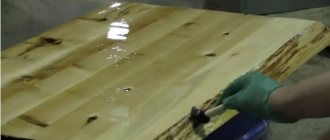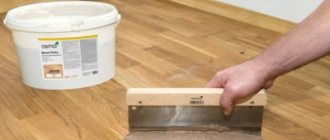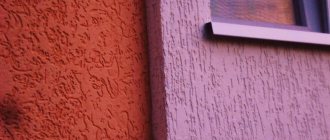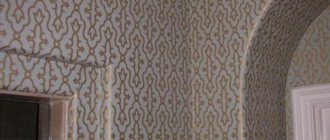Chemical composition of acrylic paints:
Acrylic paints are water-dispersed based on polyacrylates (mainly polymers of methyl, ethyl and butyl acrylates), as well as their copolymers as film formers.
Acrylic paints are diluted with water and become darker when dry. They can be used on any non-greasy base: glass, wood, metal, linen, canvas, etc.
Freshly mixed acrylic paint can be easily removed from objects with water, but when drying it requires special solvents.
The creators of their palette even make their own acrylic paints for wall painting.
This saves up to 70% on materials costs, and gives you the desired freedom from paint manufacturers!
How to create rich paint for indoor wall painting?
- The most important thing is to buy pigments. For example, COLOREX (SNIEZKA) or Pigment MIX. The advantages and disadvantages of these pigments are approximately equal: Although SNIEZKA has a richer color palette, it also has a sharp, specific smell.
- Buy white paint, preferably zinc white. It is less desirable to use 80% titanium dioxide acrylic paint as the white.
- Mixing pigment and paint. It is convenient to do this with cotton swabs. Buy plastic containers of the required volume in advance: small, medium or large.
- Adjust the amount of pigment.
- You can add mother-of-pearl to the resulting paint to obtain beautiful gold, ash, silver and red shades.
- To create mother-of-pearl, instead of a white base, add silver acrylic decorative metallic.
Tips and subtleties of the masters:
- To get a beautiful color, you can mix two bases: metallic silver and white paint.
- Silver paint can be added to regular paint to increase adhesion (adhesion of paint to the surface of the base) and reduce cracking.
- The tone of the pearl depends on whether you heavily dilute the paint with water or not.
As they say, everyone is a cooper, but only a few are thanked. Do-it-yourself acrylic painting of walls is a responsible undertaking, and you can buy ready-made acrylic paints so as not to worry about the result. new acrylic paints have become available for widespread use:
:
- fluorescent - glow when illuminated by ultraviolet lamps;
- invisible paints (a subtype of fluorescent) - they are invisible in daylight, but are able to “come to life” in the dark;
- luminescent paints, or luminous ones - they are able to accumulate light during the day, and in the dark. accordingly, it is given away;
- mother-of-pearl, with sparkles (basic colors: pearl, silver and gold). Gives the effect of iridescence, iridescent color radiance in bright lighting;
- metallic, one-component composition with aluminum powder (silver). It can be gray, black, red, green, but has a characteristic metallic sheen.
- for swimming pools and bathrooms (moisture-resistant acrylic).
Details
How to choose fabric for painting
You can use acrylic paints to paint almost any material, including thick textiles, denim, silk or thick cotton and linen. That is, even those who are just starting to paint on fabric don’t have to worry about choosing a fabric. It must be remembered that areas painted with acrylic paint will be denser.
Sellers of acrylic paints usually indicate the recommended type of fabric on almost all jars. For example, if the label says silk, this means that this paint is best used for thin fabrics, such as silk or cambric. If the jar says textiles, then this acrylic paint is recommended for painting thicker fabrics, leather or suede. In this case, the coloring process will be easy.
If the fabric is dense, then it can be painted with acrylic using a template or stencil. The design will have clear boundaries and a bright color print. In principle, everyone can learn to paint clothes with their own paints. You don't have to graduate from art school to do this. Many craft stores sell ready-made stencils with ornaments, animal figures and other images.
How to prepare fabric for acrylic painting
To begin with, the fabric should be immersed in cold water for an hour and washed, only after that you can start painting with acrylic paints.
After rinsing in clean water, dry and iron with a hot iron. If you are going to paint on thin material, for example silk, then such fabric should be stretched on a wooden frame and left to dry. And if you paint some item of clothing with acrylic, then one layer needs to be separated with cardboard from the other.
What are the types of acrylic painting?
Batik technology involves applying the appropriate dye to the selected fabric. And in order for the drawings to have clear boundaries at the junction of paints, a fixative is used, which is called a reserve composition.
Acrylic paints are used in different types of painting:
- hot batik using melted wax or paraffin. In this case, after dyeing the fabric, a wax coating is used, as a result a pattern remains on a colored background, which can be white or multi-colored. This is a popular application technique, but requires special skills.
- Cold batik is used by the circuits of reserve trains. The contour gives clear boundaries, and the acrylic dye does not spread across the fabric. And the drawing has a bright graphic look. In this case, you can use ready-made templates and stencils as an outline.
- Knotted batik painting with acrylic consists of forming a canvas pattern with small knots. The knots are tied on the fabric, or you can use strong threads or cord for this. After the process of dyeing the selected fabric, the knots dissolve and new ones are created. This is done while the pattern is being executed. The result is an interesting pattern, thanks to the smooth transition from light to dark color.
- Free painting. This type of painting is similar to drawing watercolor paintings. The paint is applied to the fabric and you can freely bring any idea to life. At the last stage, so that the shades are clear, a reserve element is used. This method is usually used by those who already have the skills of an artist.
- Painting with acrylic paints using an airbrush. An airbrush makes it possible to spray small particles of acrylic paints. In this case, airbrushes are used as a spray gun; they are used to spray paint at a distance of 30 cm.
Acrylic painting allows you to decorate it, transform ordinary items of clothing and interior design, even if you use the simplest type of painting.
Painting technique, features
Any business has its own rules, including when applying acrylic paints.
Let's look at them in more detail. When acrylic paint is diluted, it colors the fabric worse. Therefore, you need to use real thinners so that the coating does not wash off during washing. You need to use film or waterproof paper to separate the surface to be painted from the working surface of the table.
First, a lighter tone is always applied to the drawing, and only then gradually move on to darker colors.
If you follow these simple rules when painting on fabric, then a thing with an acrylic coating will not deteriorate even after washing and the design will not wash off.
There are also master classes online, after watching which you will understand how to do it correctly.
How to apply acrylic paints
They paint on fabric or clothing in several ways, it all depends on the tool used and the type of paint.
Drawings can be applied with a brush, using a stencil or template and special rollers or foam swabs. They also make a relief contour along with painting with brushes.
If you approach the process seriously and responsibly, study all the nuances and watch the master class, you can create amazing beauty using acrylic painting. And this process is finding more and more fans. If you try and succeed in making a beautiful thing, it will draw you in and you won’t be able to stop.
Preparing walls for painting
Reinforced concrete and wooden walls have their own nuances, but you will have to work hard in any case.
Material base:
- Acrylic strengthening primer: for the surface of the base, gluing its particles. Does not penetrate into deeper layers.
- Acrylic penetrating, impregnating primer. Strengthens not only the surface of the base, but also its entire volume. Penetrates to a depth of 10 cm, strengthens deeper layers of the base.
- For swimming pools and bathrooms, water-repellent primers are used against fungi and mold.
Proper preparation of walls for painting is a 50% guaranteed success in painting walls with acrylic paints.
Where to buy everything you need for work?
- Putty, putty knife, roller, universal construction primer - on the construction market or in hardware hypermarkets.
- Acrylic primer, acrylic (paint), brushes - in an art store:
- Artificial brushes “Konda” and “Spike”, large numbers, for creating a wide line. Foam brushes are suitable for drawing out design elements, for example, flower petals.
- Sketch brushes, preferably natural and more expensive ones (column brushes), to work out the drawing down to fine lines.
Coating walls with acrylic primer
Additional materials: stepladder, construction roller, spatula, sandpaper.
Important Before starting puttying work, it is better to cover all furniture with film to preserve its appearance.
- Covering the wall with universal building primer. The soil should be thoroughly absorbed into the wall and dry.
- Applying another layer of primer.
- Leveling the wall with a spatula. Creating a base for painting a wall. Plaster can be used to fill visible cracks and uneven areas.
- Final leveling of the wall. Use medium-grit sandpaper to sand the completely dry wall.
Important: Beware of white dust on your hair and furniture. Wear a respirator and protect your head. After work, thoroughly wipe the furniture.
- Carefully apply two coats of universal construction primer to the leveled wall.
The main rule is to wait patiently for each layer to dry completely. Otherwise, air bubbles may appear on the painting.
- Coating with white or black artistic primer. You can use water for dilution.
Important: Cover the wall with this composition more thoroughly than in the first stage. Acrylic primer, when applied correctly, guarantees good coverage with acrylic paint, bright colors without absorption.
The most difficult thing is to perfectly prepare the surface, since wall painting is inseparable from it. Modern design has introduced the technology of attaching canvas to a base or wall. This trick allows you to have “mobile” acrylic wall painting at home, because if you wish, you can place the work on another wall. If you don't mind the visible seams and joints on large works, wall art canvases are an innovative technique for you.
Creating wall paintings with acrylic paints
Finally, you can take a breath, take off your respirator and get rid of the corrosive white dust. The most creative stage comes when the master’s work is feared. To relax a little, here are a few funny signs:
Signs, from the collection of artist Evgeny Lipikhin
Meeting an artist with an empty palette is not good.
Bubbles on the painting - it could be rain.
If the paint shoots out of the tube, then there will be a scandal.
Step 1
, sketch on the wall.
Secret from the masters:
Artists use a colored pencil for sketching (brown, green, depending on the colors of the picture), and not a simple one, which will negate the cleanliness of the walls if it is washed.
If you have a sketch ready, or a scaled painting-print, we outline the four boundaries of the painting and enter our plot there.
First, large main lines (for example, a flower stem), then medium and small ones: leaves, petals. A sketch, like a good cheat sheet, should be detailed.
Step #2
– assessment of the painting from a maximum distance. In fact, you need to take as many of these steps as possible throughout your work.
To help the artist: a video projector, all techniques for scaling the drawing. The eraser should be soft (Kohinoor, Milan).
Step #3
– painting walls with acrylic paints.
Important: Acrylic paints dry quickly, so the time interval from mixing to painting should be no more than fifteen minutes.
Paint that is too thin will run, but paint that is too thick will not go on smoothly. Therefore, the consistency of low-fat sour cream will be “just right.”
Brushes should not be left in the air - acrylic dries quickly and cannot be washed off dry.
Draw from darker colors of the palette to light ones. For smooth brush movements, it is useful to turn on your favorite music. Constantly repeat Step #2.
Step #4
— working out details with a thin brush (columns, squirrels), blurring the clear boundaries of the contour with a foam brush.
Step #5
— enhanced colorization with the help of artistic glue, matte coating of the painting with façade varnish.
Little secrets of painting on fabric with acrylic paints
Clothing not only protects from the vicissitudes of the external environment, but also helps to emphasize individuality, highlight bright personality traits and muffle figure flaws. This is not always possible, especially in conditions of mass production. But if you dream a little and are not lazy, then painting on fabric with acrylic fabrics will turn the most inconspicuous thing into a masterpiece of design.
Features of acrylic dyes
The advantages of acrylic paints include:
- availability;
- possibility of dilution with water;
- ease of use;
- resistance to washing off after drying;
- the ability to mix different colors with each other to obtain new shades.
Important! To fix the acrylic coating, “dry” heat is used: this is usually done with an iron. When applying several layers of dye, each layer is fixed with heat.
Before starting work, you should consider the following disadvantages of acrylic dyes:
- when mixing several colors at home, it is difficult to obtain a “pure” shade;
- Long-term storage of the coloring material is not recommended, as its properties deteriorate;
- high fluidity, which makes it difficult to obtain clearly drawn patterns without the use of additional protective contours.
Choosing the right material
There are no special restrictions on the choice of fabric for painting with acrylic paints. It can be thick textiles or delicate silk. But you should not forget that the painted areas will have a denser texture.
Depending on the desired result, acrylic paints are selected for a certain type of fabric:
- The “Silk” marking means that the dye will not significantly change the stiffness of the fabric. Therefore, with its help you can apply a design on fabric with your own hands : on silk, chiffon, thin cambric;
- The “Textile” sign informs you that the paint is suitable for thick fabrics, leather, and suede.
Among Russian manufacturers, the most famous are “Batik-Acrylic” and “Dekola”. They are used for dense fabrics using the screen dyeing method. Read about: patchwork fabrics
Is it possible and how to paint with acrylic paints on fabric?
Acrylic coatings are used in several types of fabric dyeing:
- hot batik using melted wax. They are one of the most complex painting techniques. Allows you to obtain colorful structured designs with unusual shades of basic color combinations;
- cold batik based on contours of reserve compounds. These contours prevent the acrylic from spreading, which gives the patterns a clearly drawn graphic appearance. The quality of work depends on the quality of the application of the backup contour. stencils for drawing on fabric with indelible acrylic paints are often used for drawing outlines ;
- knotted batik. This type of dyeing involves creating a pattern using small knots. The field of painting some knots, they are removed and new ones are made, painted again. Instead of tying knots, pieces of fabric are often twisted tightly before dyeing;
- free painting allows you to simply create on matter and get drawings (more precisely, paintings) close to those made in watercolors. At the final stage, reserve compounds are used to prescribe shades. Selecting threads when using the technique of embroidering and painting fabrics is usually difficult, however, if you remember what free painting on fabric is , there are more possibilities when choosing this option;
- method using an airbrush. The operating principle of this tool is based on spraying tiny particles of paint. By changing the angle of application of the dye, tones of different saturation are obtained.
What to consider in your work
Regardless of the technique used to apply acrylic dyes, several points should be taken into account:
- diluting acrylic with water reduces its adhesion to fabric fibers. Therefore, it is worth using branded thinners;
- an impermeable base is placed under the surface to be painted to protect the working surface;
- for work, brushes with synthetic bristles, a roller, and sponges are used;
- Stencil designs require several layers of paint. Each subsequent layer is applied after the previous one has completely dried. For better quality painting, it is recommended to fix each layer of paint;
- fix the dye 24 hours after coating using an iron. The design is covered with cotton cloth and ironed for at least 5 minutes;
- First of all, light tones of paint are applied and then each layer will be darker;
- Before starting work, be sure to read the instructions for using the dye from this manufacturer.
If all these requirements are met, patterns are obtained that do not rub off during washing.
use of acrylic paints on fabric: painting on crepe satin
Fabric painting using stencils
The procedure for applying acrylic paints using a stencil:
- a stencil is drawn (or selected on the Internet and printed);
- the design is cut out along the contours;
- prepare a place on the fabric for applying the image;
- A stencil is applied to the fabric and secured. Then, on the fabric for drawing , through a stencil, the outline of the design is drawn either using paint or an acrylic marker (you can use a simple pencil);
- the stencil is removed.











